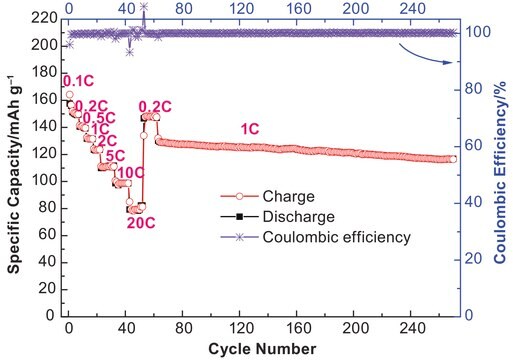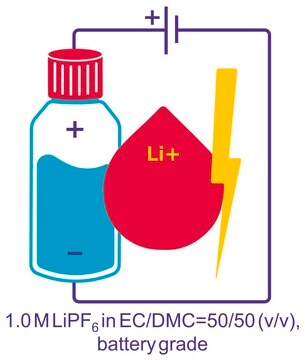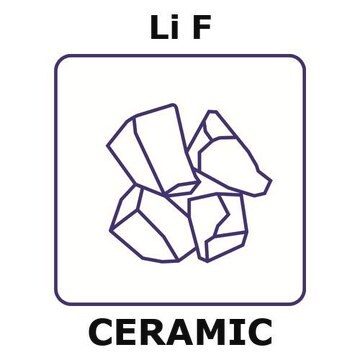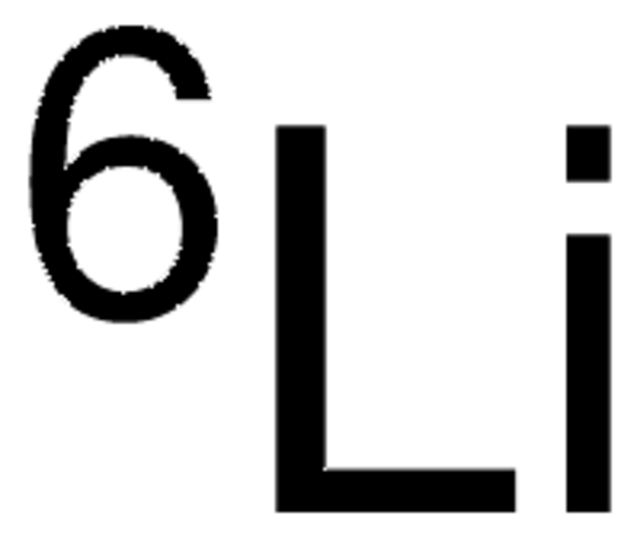GF47159826
Lithium
foil, 25x100mm, thickness 0.6mm, as rolled, 99.9%
Synonym(s):
Lithium, LI000260
About This Item
Recommended Products
Assay
99.9%
form
foil
manufacturer/tradename
Goodfellow 471-598-26
resistivity
9.446 μΩ-cm, 20°C
size × thickness
25 x 100 mm × 0.6 mm
bp
1342 °C (lit.)
mp
180 °C (lit.)
density
0.534 g/mL at 25 °C (lit.)
SMILES string
[Li]
InChI
1S/Li
InChI key
WHXSMMKQMYFTQS-UHFFFAOYSA-N
Looking for similar products? Visit Product Comparison Guide
Related Categories
General description
Application
- A retrospective on lithium-ion batteries: This article reviews the contributions in the development of lithium-ion batteries, discussing inspirational insights to guide future breakthroughs in battery technology (J Xie, YC Lu, 2020).
- Guidelines and trends for next-generation rechargeable lithium and lithium-ion batteries: This review discusses the limitations of commercial lithium-ion batteries and explores the directions for next-generation batteries (F Wu, J Maier, Y Yu, 2020).
- Prospects for lithium-ion batteries and beyond—a 2030 vision: This article explores the future of lithium-ion batteries and discusses current strategies to improve these and next-generation battery technologies (CP Grey, DS Hall, 2020).
- Lithium brines: A global perspective: This study offers a global perspective on lithium brines, discussing the critical and technologically important roles of lithium, which is in increasing demand (LA Munk, SA Hynek, DC Bradley, D Boutt, K Labay, 2016).
Legal Information
Signal Word
Danger
Hazard Statements
Precautionary Statements
Hazard Classifications
Skin Corr. 1B - Water-react 1
Supplementary Hazards
Storage Class Code
4.3 - Hazardous materials which set free flammable gases upon contact with water
WGK
WGK 1
Flash Point(F)
Not applicable
Flash Point(C)
Not applicable
Choose from one of the most recent versions:
Certificates of Analysis (COA)
Sorry, we don't have COAs for this product available online at this time.
If you need assistance, please contact Customer Support.
Already Own This Product?
Find documentation for the products that you have recently purchased in the Document Library.
Customers Also Viewed
Our team of scientists has experience in all areas of research including Life Science, Material Science, Chemical Synthesis, Chromatography, Analytical and many others.
Contact Technical Service







